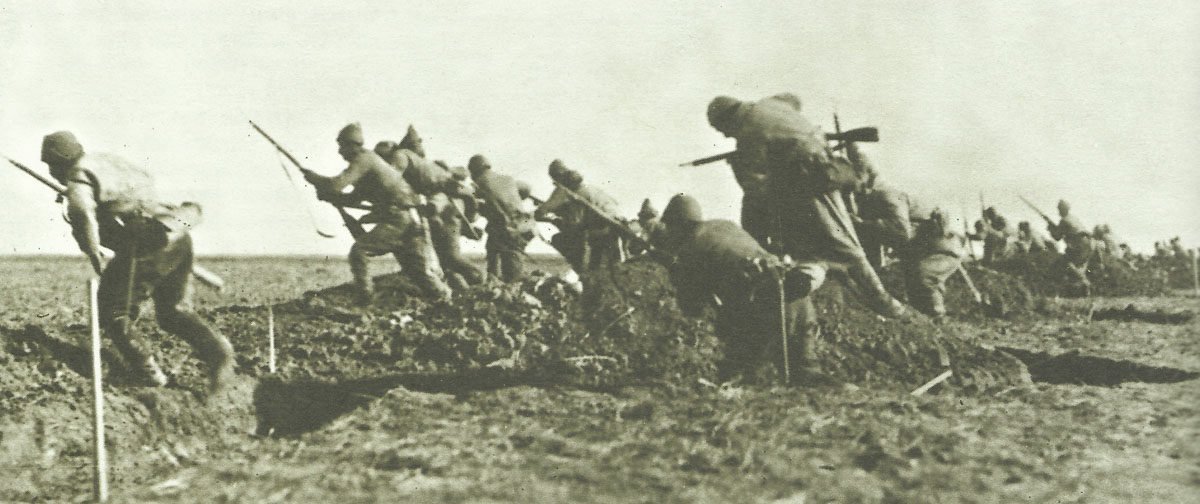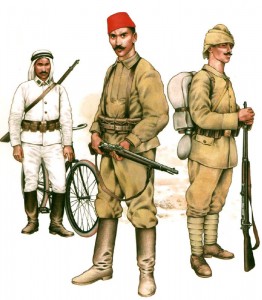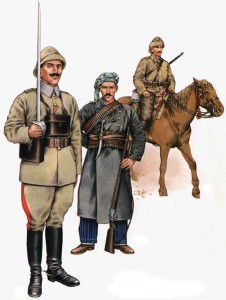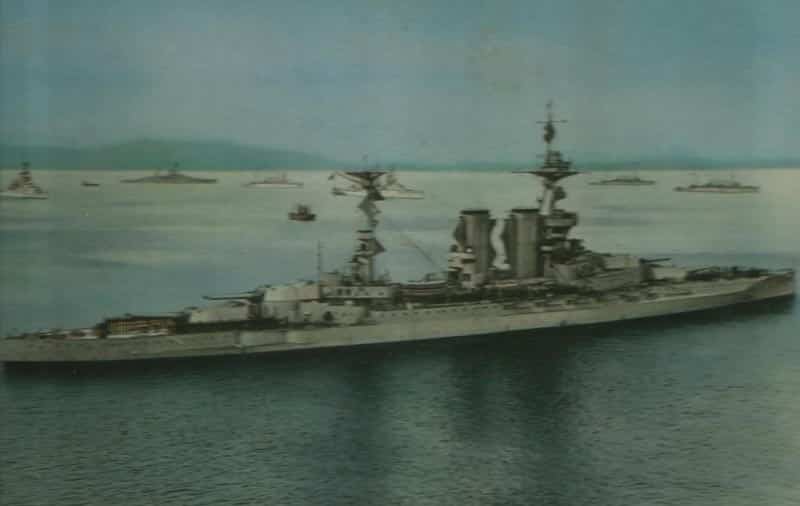Turkish Army in World War One – uniforms, strength, organization.
History, disposition and Orders of Battle of Turkish forces in November 1914, soldiers and casualties (November 12, 1914 – October 31, 1918).

At the start of November 1914 Ottoman Empire joined World War One versus the Allies. The ramshackle Ottoman Empire ended up eroding for 50 years once, during 1908, the modern Young Turks Committee had taken power, removing Sultan Abdul Hamid along with surprising simplicity. More defeats had then followed: in 1911 by Italy in Tripoli, as well as in 1912 in the First Balkan War. Even though Turks got back certain terrain during the 2nd Balkan War, the army, exhausted by 6 years’ struggling, was at that time near to break, usually starving as well as in rags, its pay off within debt, its administration destroyed.
Turkish Army 1914-1918
Table of Contents
Blocked by Bulgaria, however neutral, from her northern allies, Turkey could acquire from them the much-needed army supplies simply by subterfuge. Inside her own areas, the brand-new railway becoming constructed by German specialists yet had gaps each side of the Gulf of Alexandretta, when it surpassed the Taurus and Amanus mountains approaching to Aleppo. There it extended one of the ways in direction of Baghdad, but ended 380 miles (ca. 612 km) next to the river Tigris, and yet another towards Amman and Medina. It was 250 miles (ca. 402 km) away from the Russian Caucasus frontier from its closest place.
The military, something over one million men strong divided in Thirty-six ordinary divisions, was allocated within the I, II, III, and IV Armies, which were correspondingly within Turkey-in-Europe, western Anatolia, Erzurum close to the Russian border, and Syria. Additionally, there were 2 ordinary divisions each in the Yemen, central Arabia, and Mesopotamia (modern-day Iraq).
Enver Pasha, minister for war, who with Talat Bey, minister for the interior, headed the government, had taken control of the III Army, about 150,000 strong, and in mid-December directed their ill-equipped men over the mountains into the Caucasus, versus the tinier Russian 7th Army. Surpassed by winter snow storms, the moment of the appearance of the 3 corps was wasted, and they assaulted piecemeal. However, the starving, fatigued soldiers fought fiercely, and the Russian leaders were alarmed. After that, beaten close to Sarikamish, the Turks encountered the option of surrender or retreat over the frozen mountains. Just 12,000 returned to Erzurum. One whole corps laid down its arms, and the Russians counted 30,000 frozen corpses in the wilderness.
In Feb 1915 the IV Army sent 20,000 men along the Sinai Peninsula to cut off the Suez Canal. Egypt, nevertheless in 1914 nominally a part of the Ottoman Empire but since 1882 mastered and occupied by The United Kingdom, ended up announced a British protectorate once Ottoman Empire joined world war one. It had been garrisoned by a single British Territorial and 2 Indian divisions, and the two-division ANZAC Army Corps was setting up and exercising there. The Turks were beaten back easily. Within the years to come, the English considered the strike throughout Sinai, in the beginning clumsily and tentatively, after that in 1917 placed under Allenby skilfully and overwhelmingly, conquering Jerusalem in December 1917.
Probably the most essential Turkish contribution towards the Austro-German war effort was, however, the instant one, done in October 1914 by closing the Dardanelles and Bosporus to Allied ships. This kind of, simply by cutting off Russia’s Black Sea ports, brought her superb corn exporting business to an end, and closing her most crucial access for products from the outside globe. With a strike her exports dropped by 98 % as well as her imports by 95 %, numbers devastating to any country, probably be deadly to Russia with her great population and useless industry. It required impressive strategic and moral requirements on her Allies to come to her aid.
Disposition of Turkish Forces, November 1914
THRACE:
First Army
I Corps: 1, 2, 3 Infantry Division
II Corps: 4, 5, 6 Infantry Division
III Corps: 7, 8, 9 Infantry Division
IV Corps: 10, 11, 12 Infantry Division
19, 20 Infantry Division (new formations)
I Cavalry Brigade
Second Army
V Corps: 13, 14, 15 Infantry Division
VI Corps: 16, 24 (new), 26 Infantry Division
SMYRNA
Fortified Area Command
SYRIA
Fourth Army
VIII Corps: 23, 25, 27 Infantry Division
XII Corps: 35, 36 Infantry Division
CAUCASIA
Third Army
IX Corps: 17, 28, 19 Infantry Division
X Corps: 30, 31, 32 Infantry Division
XI Corps: 18, 33, 34 Infantry Division
37 Infantry Division (in transfer from Thrace)
Reserve Cavalry Corps:
1, 2, 3, 4 Reserve Cavalry Division (new)
Van Jandarma Division (Infantry; new)
2 Cavalry Division
Van Cavalry Brigade
MESOPOTAMIA
Iraq Area Command: 38 Infantry Division
ARABIA & YEMEN
VII Corps: 21, 22, 39, 40 Infantry Division
OTTOMAN EMPIRE (November 12, 1914 – October 31, 1918)
- Soldiers available on mobilization = 360,000-500,000
- Army strength during the war = 1,600,000
- KIA Military = 350,000
- Wounded Military = 450,000
- Civilian losses = c.4,000,000 (including Massacre of Armenians, Syrians, Jews and Greeks)
References and literature
Illustrierte Geschichte des Ersten Weltkriegs (Christian Zentner)
History of World War I (AJP Taylos, S.L. Mayer)
The Ottoman Army 1914-18 (David Nicole PHD)
Ordered to Die – A History of the Ottoman Army in the First World War (Edward J. Erickson)
The Ottoman Army 1914-1918 – Disease & Death on the Battlefield (M. Hakan Yavuz)








